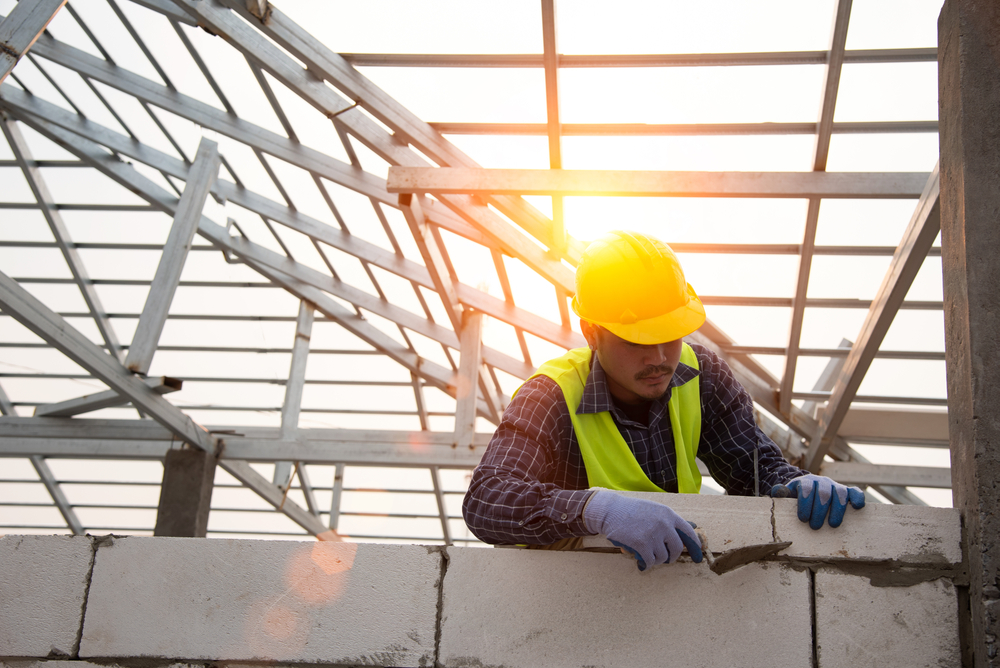Benefits of Using Genex AAC Blocks

AAC Benefits
What is AAC?
Autoclaved aerated concrete (AAC), Also Known as autoclaved cellular Concrete(ACC), autoclaved light weight concrete (ALC) AAC products include blocks, wall panels, floor and roof panels, cladding (facade) panels and lintels. Autoclaved Aerated Concrete (AAC) is a green building material, which can be used for commercial, industrial and residential construction. It is porous, non-toxic, reusable, renewable and recyclable.
When was AAC first developed?
AAC was developed in 1924 by a Swedish architect, who was looking for an alternate building material with properties similar to that of wood – good thermal insulation, solid structure and easy to work with – but without the disadvantage of combustibility, decay and termite damage.
What are AAC blocks made of?
ACE blocks are manufactured using fly ash mixed with cement, lime, water and an aerating agent. It is then cut to various sizes and autoclaved for around 12 hours eventually the blocks are ready to be transported and placed at site.
What are the advantages of using AAC?
Green Eco Sustainable Product
- Use of recycled industrial waste (fly ash) for manufacturing.
- Non-polluting industry as only steam is used for curing and strength gain.
- Nil toxic ingredients.
- No emission of gases.
- Total energy consumption for producing AAC is far less than what it takes to produce regular bricks.
Lightweight
- Very Light weight around 600 Kg-650 Kg/Cm3 oven dry densities almost ¼ th the weight of standard bricks. Hence easy to transport.
- Usage reduces overall dead load of a building, thereby allowing flexibility in design of construction of taller buildings.
Thermally Insulated & Energy Efficient
- Provides excellent thermal insulation, thus reducing HVAC costs of a building.
Fire Resistant
- Non-combustible and fire resistant up to 1600° C.
- Can withstand up to 2-6 hours of direct exposure depending on thickness.
Acoustic Performance
- Superior sound absorption qualities due to porous structure of blocks.
- Offers sound attenuation of about 42 dB, blocking out all major sounds and disturbances.
- Ideal for schools, hospitals, hotels, offices, multi-family housing and other structures that require acoustic insulation.
Easy Workability and Design Flexibility
- Blocks can be easily cut, drilled, nailed, milled and grooved to fit individual requirements.
- Available in custom sizes.
- Simplifies hydro-sanitary and electrical installations, such as pipes or ducts, which can be installed after the main construction is complete.
Seismic Resistant
- Lightweight blocks reduce mass of a structure, thus decreasing the impact of an earthquake on a building.
- Non-combustible nature provides an advantage against fires, which commonly accompany earthquakes.
Precision
- Available in exact sizes.
- Results in smooth walls with perfect contact between different elements.
- Reduces cement and steel usage.
Termite/Pest Resistant
- Due to structure of blocks, AAC cannot be damaged or infested by termites and other pests.
Low Maintenance
- Reduces operating cost by 30% to 40%.
- Reduces overall construction cost by 2.5% as it requires less jointing and reduces need for cement and steel.
- High-insulation blocks save up to 30% in energy costs.
- Variety in sizes of blocks helps increase carpet area.
- Wall painting and plastering last longer as almost nil efflorescence affects AAC resulting into lower maintenance costs.
Faster Construction
- Reduces construction time by 20%.
- Different sizes of blocks help reduce the number of joints in wall masonry.
- Lighter blocks make construction easier and faster.
- Easy to install. Sets and hardens quickly.
Clay Bricks Vs AAC Bricks
- Rapid Construction : One solid AAC Block is equilvalent in area of approx 9 standard clay bricks yet less than 1/4 the weight, leading to fast laying. Installation of AAC is 2.5 times faster than bricks.
Environmental Impact
CLAY BRICKS
- One clay brick consumes 3.2 kgs of top soil
- One sq ft of carpet area with clay brick walling will consume 25.5 kgs of top soil
- One sq ft of carpet area with clay bricks will consume 8 kgs of coal
- One sq ft of carpet area will emit 17.6 kgs of CO2
AAC BLOCKS
- No top soil consumed
- Uses fly ash which is a thermal power plant waste product & thus no consumption of top soil
- One sq ft of carpet area with AAC blocks will consume 0.9677 kgs of coal
- One sq ft of carpet area will emit 2.13 kgs of CO2
